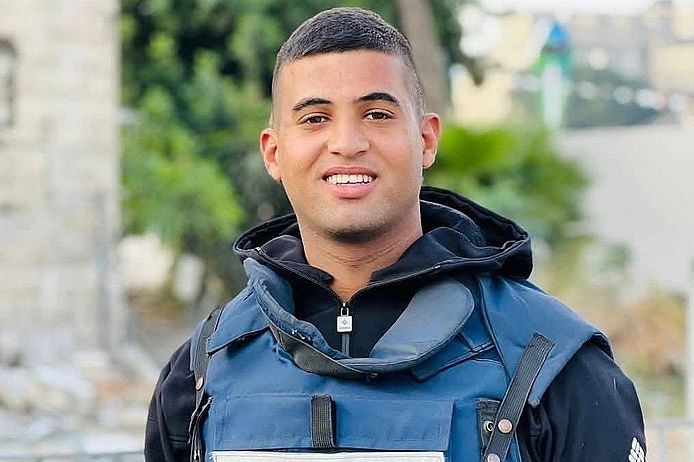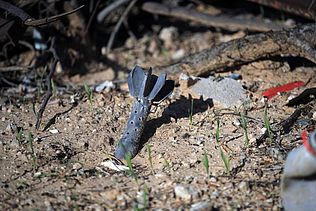The killing of Mohammed Mansour (and his wife) in the southern Gaza Strip (Khan Younis) and of Hossam Shabat in northern Gaza (Beit Lahia) continues the Israeli army's notorious crackdown on media workers, particularly in Gaza, but also to a certain extent in the West Bank or even in Lebanon. According to the international Committee to Protect Journalists (CPJ), at least 178 journalists have been killed there by Israeli military force in the past year and a half, many of them were likely killed deliberately. Other sources estimate that well over 200 members of the profession have been killed.
Hossam Shabat was no ordinary journalist. When the next war broke out in Gaza after the Hamas attacks on 7 October 2023, he was only 21 years old and had already lived through several wars before. He had not even finished his journalism degree when the war started. When the attacks on Gaza began, he reported on the situation on the ground, especially in his home community of Beit Hanoun, and the longer the killing went on, the more he found himself in the position of a war reporter, rushing from one location to the next to report on the massacres in the Gaza Strip.
Indeed, he did end up being killed by the Israeli military, as had happened to so many media professionals in Gaza before him. The obvious aim is to prevent reporting on war crimes, as the German Foreign Minister Annalena Baerbock condemned in no uncertain terms at the beginning of May 2022 on the occasion of Press Freedom Day with regard to the Russian war of aggression against Ukraine: namely that "governments try to restrict freedom of the press and information, prevent debate, spread misinformation, intimidate journalists or even make them disappear.” In Gaza, such a government has also been (deliberately) killing journalists for a year and a half now. "They give a voice to the victims," continues Baerbock, "who would otherwise not be heard and would not be visible; they document human rights violations, but also war crimes." This is exactly what Hossam Shabat did after he had decided to stay in northern Gaza without his family and risk his life to report on the genocide on a daily basis. As far as I know, the Federal Foreign Office has remained silent on the targeted killing of journalists in the Gaza Strip until the end of Baerbock’s term as minister and beyond.
However, there is another aspect to the murder of Hossam Shabat on 24 March: Hossam Shabat, young as he was, had attracted over 150,000 followers on X (formerly Twitter) and more than half a million on Instagram since 7 October 2023. He became a correspondent for the Al-Jazeera news channel during the war – but above all, the Palestinian population respected him as their mouthpiece and as a key witness to what was being done to them in Gaza.
When his entire family was displaced as a result of the Israeli army's forced displacement orders, he decided to stay in the north of the Gaza Strip in order to report on the Israeli government's completely unleashed warfare and later the ethnic cleansing of northern Gaza, in spite of his knowledge that colleagues of his had already been killed. Only after 492 days did he see his mother again, after the ceasefire had come into force. On 6 October 2024, he said in a tweet in memory of his friends Ismail Al-Ghoul and Hassan Hamad, both also journalists, who were killed by the Israeli army: “I promise you guys, I’m still carrying the torch, rest in peace, my beloved Ismail and Hasan.” The people of Gaza loved him because he radiated hope with this decision and his work. Hope for justice, hope that the world would intervene in the face of the most serious crimes in the enclave. A hope that was not realised until his death. For Palestinians in the occupied territories and around the world, his courage and willingness to make sacrifices made him an icon, for interested parties abroad he represented as an important source and for many international journalists, a valued colleague.
The reactions to his death on social media are reminiscent of the expressions of grief, bewilderment, and anger following the murder of Palestinian-American journalist Shireen Abu Akleh by an Israeli soldier in Jenin on 11 May 2022. Unlike in the case of Hossam Shabat, who died far too young, many people had grown up with Abu Akleh, who was born in 1971. Until her violent death, she had reported on the illegal occupation and violence for decades, often risking her life. As a face in the media, the journalist was part of everyday life for millions of Palestinians. She was their voice.
Also Wael Dahdouh comes to mind again: as bureau chief of Al-Jazeera in Gaza, he reported on the situation on the ground from day one of the war. Dahdouh’s wife, two of his children (15 and 7 years old), and one of his grandchildren (18 months) were killed by an Israeli airstrike back in October 2023. Despite this, Dahdouh carried on. In December, Dahdouh was injured in an Israeli attack, but he carried on anyway. Even after another child of his was killed in January 2024, his adult son Hamza, who, like him, worked as a journalist for Al-Jazeera, he continued his work – even though he knew full well that it was making him a target. Eventually, he managed to leave the Gaza Strip for medical treatment.
Since then, Wael Dahdouh has been trying to find a way back to living some sort of “normal” life and comments on the genocide from the outside. In the Arab world and in Palestine, there are numerous graffiti depicting of him and Shireen Abu Akleh. Both were already icons of steadfastness against the occupation during their lifetimes and before her murder in the case of Shireen Abu Akleh or the murder of his family in the case of Wael Dahdouh. After that, they became all the more symbols of bearing witness unbendingly, to the oppression of the Palestinians and the genocide against them in Gaza. Dahdouh, although he is still alive, paid a very high price for the role he played for the Palestinian population. Since he left Gaza, presumably also to protect the lives of his remaining children, he has lost a great deal of attention. In another way, he has also been silenced.
But it is by no means just journalists who are affected. Since 7 October 2023, the Israeli army has killed so many university teachers and students in Gaza that the United Nations warned of a scholasticide, i.e. the targeted destruction of higher education and its scholars, as early as April 2024. A particularly well-known example is Refaat Al-Areer, a professor of English literature and internationally recognised writer and editor, a poet and a public intellectual in Gaza. He tried to empower young people to raise their voices, to trust that they can even have a voice against all odds. In 2013, he published a collection of texts by young writers titled “Gaza Writes Back.” A few weeks before he was killed by the Israeli army in December 2023, he published the poem "If I must die," which has since been presented and read at protests across the world against the killings in Gaza.
The killings of journalists are, of course, partly about gaining control over what news leaves Gaza and what gets reported. But it is also about much more than that, if you look at the list of media workers, university lecturers, writers, and artists who have been killed.
It seems as if every person who publicly fulfils the function of giving even a spark of hope to Palestinians in Gaza in this most terrible of times must be silenced: by expulsion, by arrest and torture, or simply by death. The killing of those who were a role model for others in Palestinian society, an inspiration to try not to give up even in the face of the abyss, who were considered by some to be idols of resistance, must die. Not because they were able to wake the world from its deep slumber. No, the world has turned its back on Gaza, as was recently written again on an Israeli leaflet dropped over the Strip. They had to die because they resisted their own annihilation for all of Palestinian society to see. They had to die because the Israeli state wanted to make an example of what happens to those who try to resist the erasure of their culture, their history and their identity as Palestinians. They had to die because the Israeli leadership believes it can bring about the complete subjugation of the Palestinian population.
In his posthumously published farewell post on X, Hossam Shabat urged: “do not stop speaking about Gaza. Do not let the world look away. Keep fighting, keep telling our stories—until Palestine is free.”


